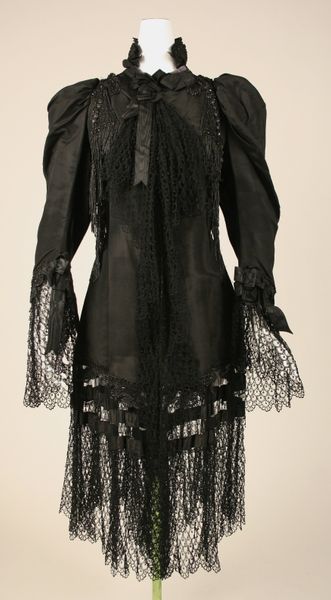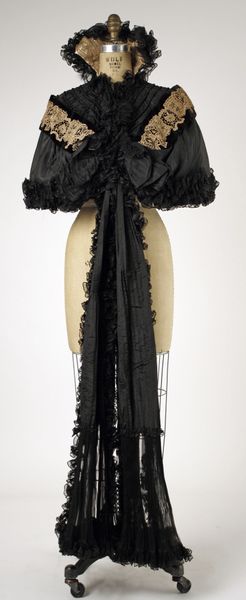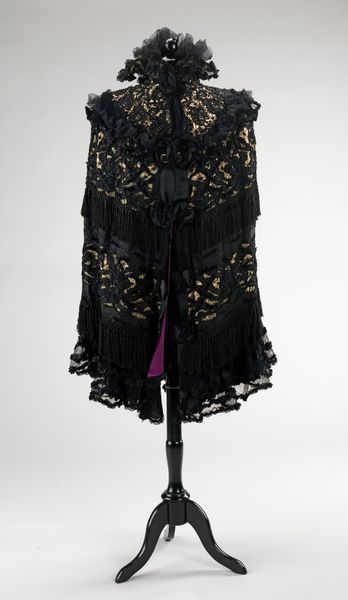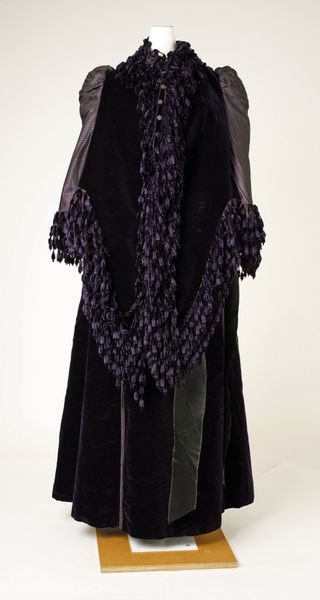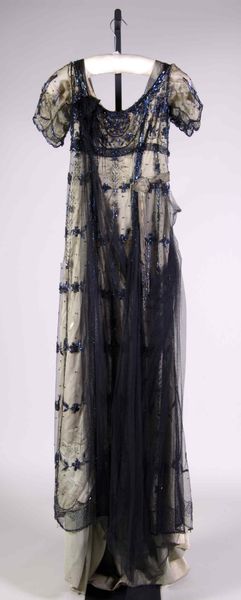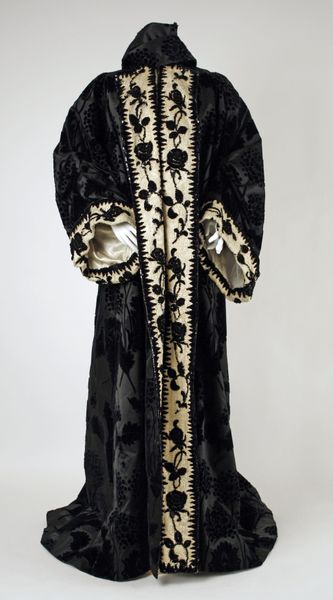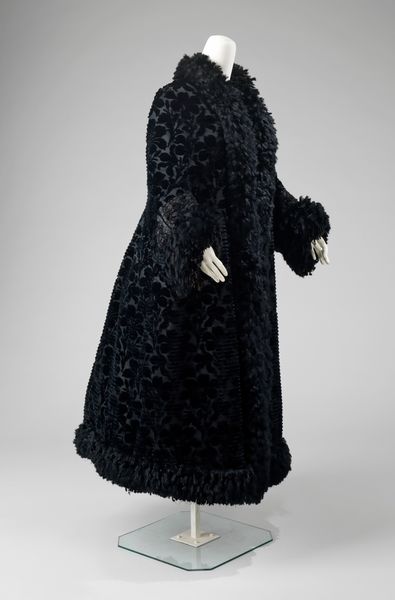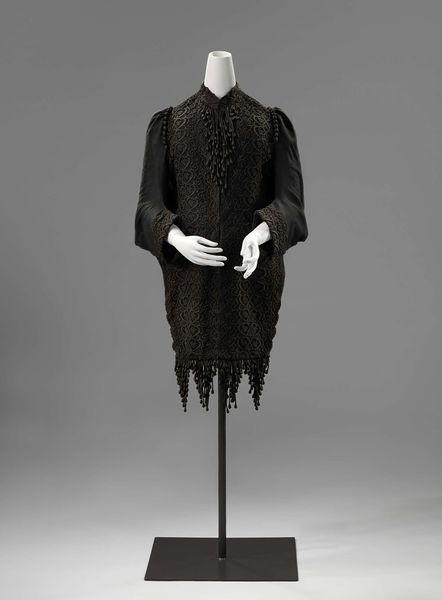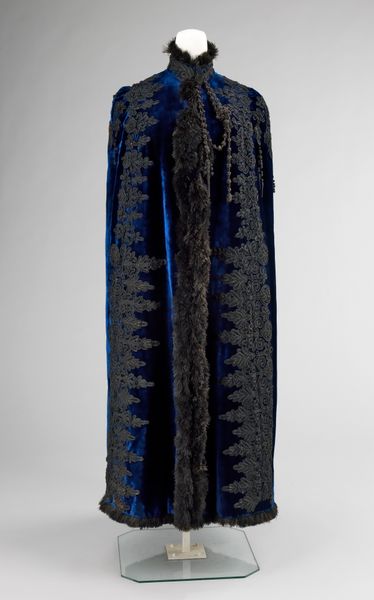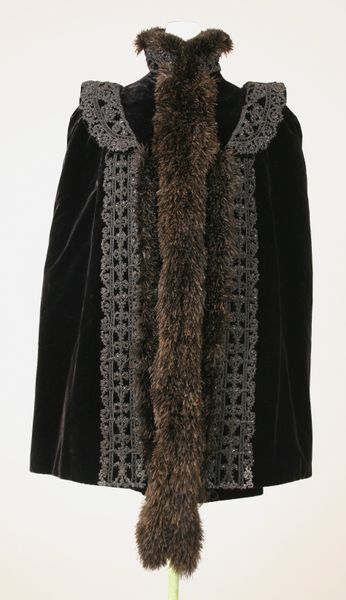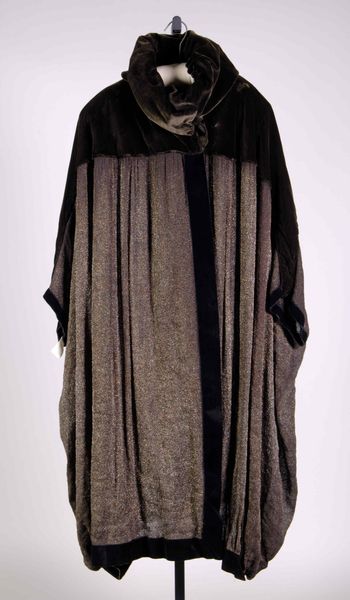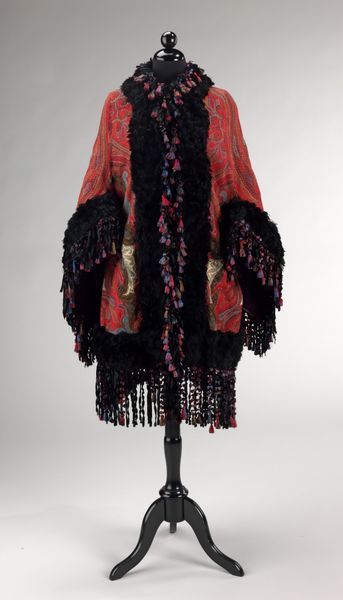
Copyright: Public Domain
This evening dolman, created by Emile Pingat, envelops us in a world where fashion speaks volumes. The most striking feature is the omnipresent fringe, cascading like a waterfall of darkness. Fringes, historically, have signified status and luxury, adorning garments of priests and royalty across cultures. Think of ancient Mesopotamia, where fringes on robes indicated rank, or the flapper dresses of the 1920s, where they symbolized rebellion and modernity. Here, on Pingat's dolman, the fringe seems to embody both opulence and a touch of the avant-garde. The monochromatic scheme amplifies the dolman's psychological impact. Black, often associated with mourning and mystery, can evoke feelings of solemnity and introspection. The collective memory of black clothing might stir subconscious associations with grief, but also with elegance and sophistication. The dolman, therefore, becomes more than just an article of clothing; it is a vessel of cultural memory, a symbol that has evolved through time, carrying with it a complex web of meanings and emotions. It is a reminder that fashion, like art, is a language that speaks to our deepest selves, echoing through the corridors of history.
Comments
No comments
Be the first to comment and join the conversation on the ultimate creative platform.

